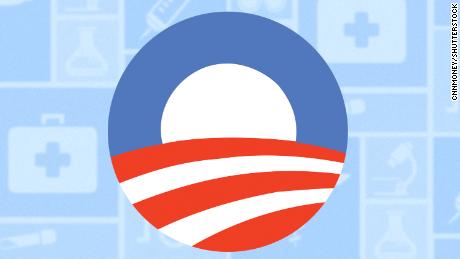The future of Obamacare is at risk. Here’s what you could lose
If the court wipes away Obamacare, it would have a sweeping impact on the nation’s health care system and on the lives of tens of millions of Americans — not only for the roughly 20 million people who’ve gained coverage on the Affordable Care Act exchanges and through the expansion of Medicaid to low-income adults. The law is also what allows parents to keep their children on their health insurance plans until age 26 and obtain free mammograms, cholesterol checks and birth control.
“The implications of the court case could stretch far and wide,” said Cynthia Cox, director of Kaiser’s Program on the ACA. “Virtually every American has been affected in some way by the Affordable Care Act.”
Plus, some states that run their own exchanges have also seen higher-than-usual activity during special enrollment periods this year.
Here’s what else is at stake:
Individual market
The Affordable Care Act has had the greatest impact on the individual market, which was largely unregulated prior to the health reform law.
In addition to banning insurers from basing coverage on people’s medical histories, the law ended the practice of insurers imposing annual or lifetime caps on benefits, and it also placed limits on annual out-of-pocket spending. It mandates that insurers provide more comprehensive benefits, including medication, maternity and mental health. It prevents insurers from charging women more and restricts premiums for older folks to no more than three times those of young adults.
Obamacare set up health insurance exchanges to allow Americans to shop for individual policies and created federal subsidies so low- and moderate-income enrollees could buy plans for less than 10% of their income. It also limits the deductibles and co-payments for lower-income policyholders.
About 11.4 million people signed up for coverage on the marketplaces for 2020, down from a high of 12.7 million in 2016. Several million more purchase individual plans outside of the exchanges. They cannot apply for subsidies but receive all of the other benefits.
Many consumers, however, have not been happy with the changes the Affordable Care Act wrought — particularly because they caused premiums to spike. Many middle class Americans who don’t qualify for subsidies have dropped their coverage, saying it’s now unaffordable.
Trump signed an executive order in September that says it’s US policy to protect people with pre-existing conditions, but administration officials didn’t specify how that would be enforced if the Affordable Care Act is overturned.
Medicaid
Before Obamacare, most Medicaid enrollees were low-income children, pregnant women, parents, the disabled and the elderly.
The health reform law opened up the program to low-income adults with incomes of up to 138% of the poverty threshold — currently about $17,600 for a single person — in states that opted to expand their Medicaid programs. The provision allowed more low-income parents to enroll and provided a new pathway for adults without dependent children to gain coverage.
The federal government paid 100% of the costs of the expansion population for the first three years and slowly lowered the reimbursement rate to 90%, where it will remain.
Medicare
The Affordable Care Act has meant lower premiums, deductibles and cost-sharing for the more than 60 million senior citizens and disabled Americans enrolled in the program.
The health reform law made many changes to Medicare. It slowed the growth of payment rates to hospitals and other providers, reduced payments to Medicare Advantage plans and improved benefits for enrollees.
Under Obamacare, Medicare beneficiaries receive free preventative benefits, such as screenings for breast and colorectal cancer, heart disease and diabetes.
And the Affordable Care Act helped close the gap in Medicare’s drug coverage and was on track to completely eliminate it by 2020. (The Bipartisan Budget Act of 2019 accelerated the timeline to 2019 for brand-name drugs.)
But the law did result in higher costs for more affluent beneficiaries. The law initially froze the threshold for the Medicare premium surcharge at $85,000 for individuals and $170,000 for couples, so more people became subject to it. That freeze has now been lifted so the thresholds are updated annually. They are currently at $87,000 for individuals and $174,000 for couples.
The Affordable Care Act also added a premium surcharge on drug coverage for higher-income enrollees.
Employer-sponsored insurance
Obamacare requires that companies with at least 50 employees provide affordable insurance to their staffers who work more than 30 hours a week.
This mandate didn’t have a major impact on the 150 million-plus workers who are insured through their jobs. Most larger employers already offer coverage for full-time workers. However, setting the bar at 30 hours a week prompted some employers to extend coverage to more of their staff, since many companies had considered that threshold to be part-time.
Also, the law allows children to remain on their parents’ plans until they turn 26. This has proven to be one of the more popular Affordable Care Act provisions and has helped lower the uninsured rate of this age group.
Workers also no longer have to pay for contraceptives and preventative screenings, such as colonoscopies and mammograms. The law requires these be provided free of charge.
The Affordable Care Act also prohibits employers from imposing annual or lifetime limits on benefits and caps out-of-pocket spending.
Obamacare also had an impact on employees who work at companies with fewer than 50 workers. Insurers can no longer ban workers with pre-existing conditions or ask them to pay more. The law requires plans to cover an array of benefits, including maternity, mental health and prescription drugs. And it limits insurers from charging older workers premiums more than three times those of younger workers.
![]()



